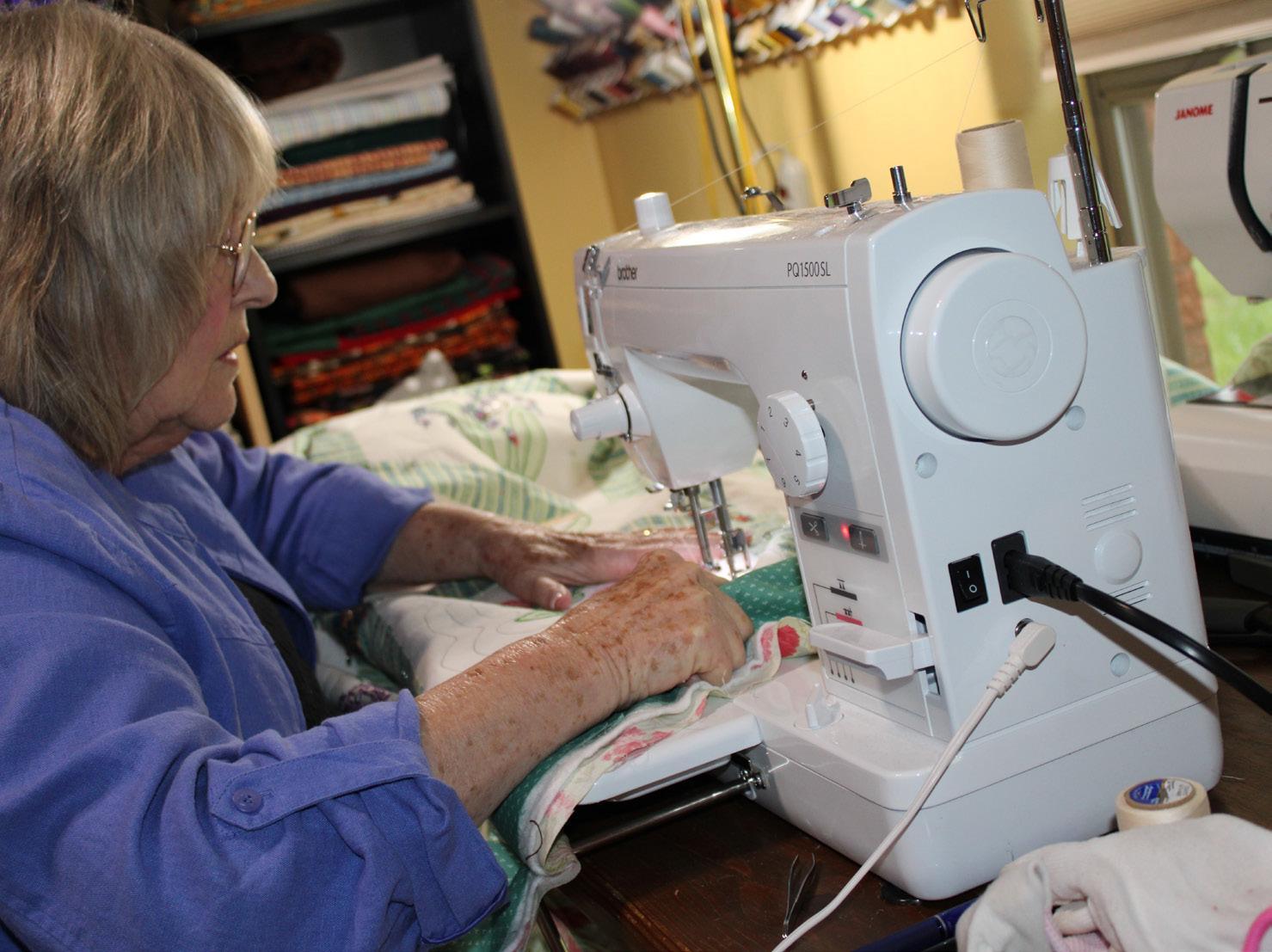
Joleene Snider, Texas State University senior lecturer emeritus for the Department of History, quilts while she discusses the women’s rights movement. She said quilting has historically been a group activity in which women would discuss current events and make things happen.
Daily Record photo by Shannon West
Women’s History class to be held on International Women’s Day
It is officially Women’s History Month, and Joleene Snider, Texas State University senior lecturer emeritus for the Department of History, has done a lot of research on women’s rights and how far they have or, in her opinion, haven’t come.
“We haven’t come as far as we should have,” Snider said. “Let’s write women back into history.”
Snider will be teaching a Women’s History course for Lifelong Learning SMTX at the San Marcos Public Library at 10 a.m. on March 8, which is also International Women’s Day.
In 2023, Snider said there were less men than women in the United States by a small fraction, 50.5% women and 49.5% men.
“We are the majority,” Snider said. “We have traditionally been the majority.”
Snider shared some statistics related to women’s representation in government. She said that there have been 2,003 senators who have served the country since 1789 when the first senate was organized, but only 60 of them have been women and 1,943 have been men. In 2023, she said there were 100 people that served the U.S. Senate — 25 were women and 75 were men.
“That’s nowhere near the half and half ratio that the gender population is,” Snider said. “It’s actually a quarter.”
Snider said, although she couldn’t get an exact number of people that have served in the House of Representatives since its existence, it was over 11,000. Only 383 have been women. In 2023, she said 436 people served in the House of Representatives — 126 were women and 310 were men.
“The most women that have ever served in the House of Representatives is right now,” Snider said. “And we wonder why our rights aren’t respected.”
Snider said that because there are 50 states, that means there are 50 governors at any given time, but since they didn’t all come to the union at once she did the math using the original 13 states.
“I came up with approximately 764 gubernatorial terms of the original 13 states,” Snider said. “So if you add in all of the other states when they came into the union [and] how many governors they’ve had … we’re talking a huge number, a gigantic number well over 1,000 [or] 2,000. Only 43 women [have been governors].”
The leadership of fortune 500 companies favors men as well. Snider said only 9.4% are headed by women.
“All that money, all that power, and all that wealth is controlled by men 90% of the time, slightly more,” Snider said. “This is enormous power.”
The United States isn’t the only country with this imbalance. Snider said of world leaders, less than a third of UN member states have ever had a female leader. In 2019, she said the rate of women in Parliaments around the world was approximately 25%. In 2013, she said only 8% of national leaders were female at any level, and only 2% were presidents of countries.
Pay distribution is another area in which women are still lagging behind. Snider said in 2022, women earned 17% less than men in the United States. She said for every dollar earned by men, women earned 82 cents. She said when comparing the same job title, seniority and hours worked, women earned 11% less than their equal male counterparts in 2022.
“Elizabeth Cady Stanton would be appalled at these numbers,” Snider said.
Snider will dive further into these statistics, discuss Elizabeth Cady Stanton’s Declaration of Sentiments, as well as the 1848 Seneca Falls Convention, which was the first women’s rights convention in the United States that launched the women’s suffrage movement, on March 8 at 10 a.m. at the San Marcos Public Library.











